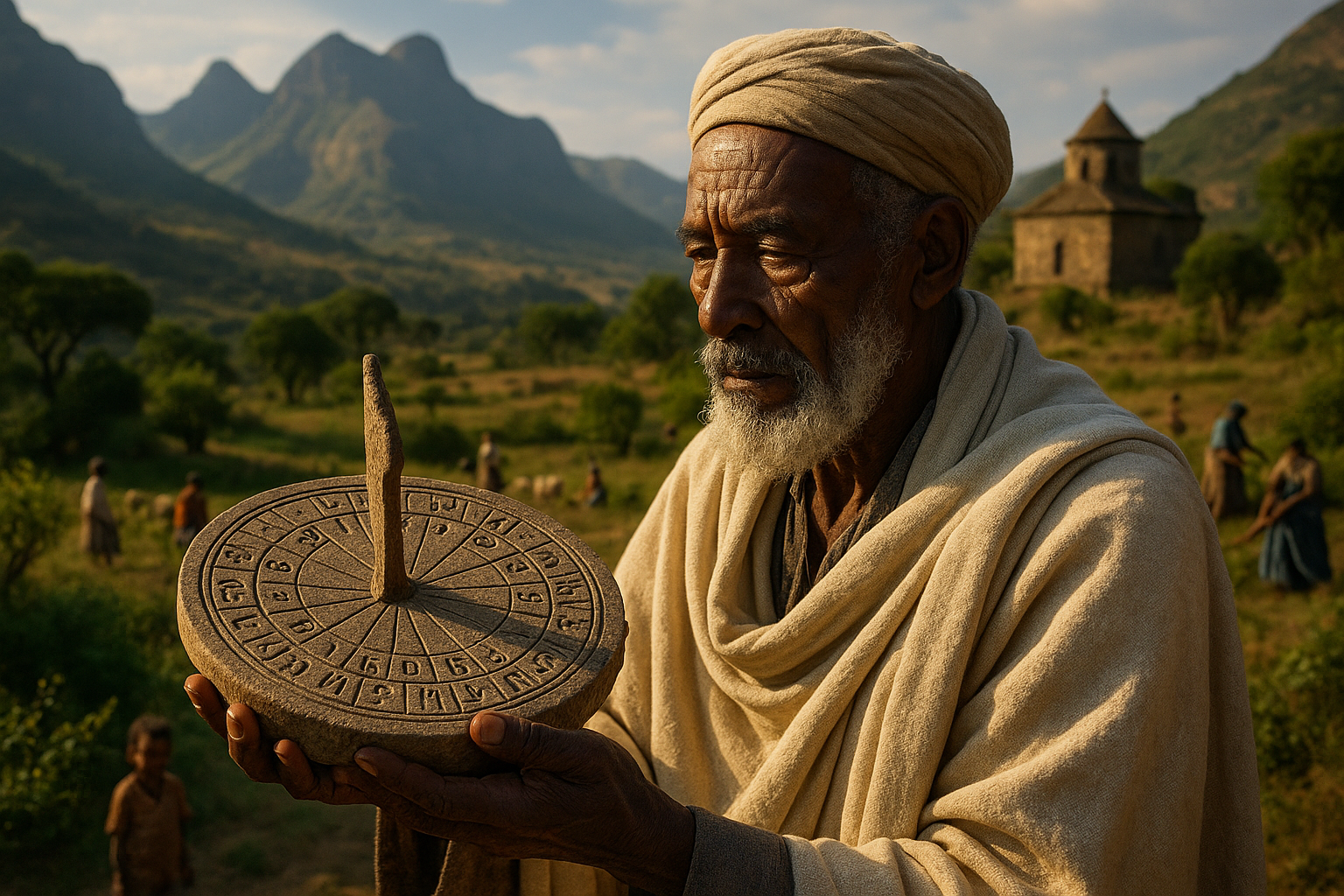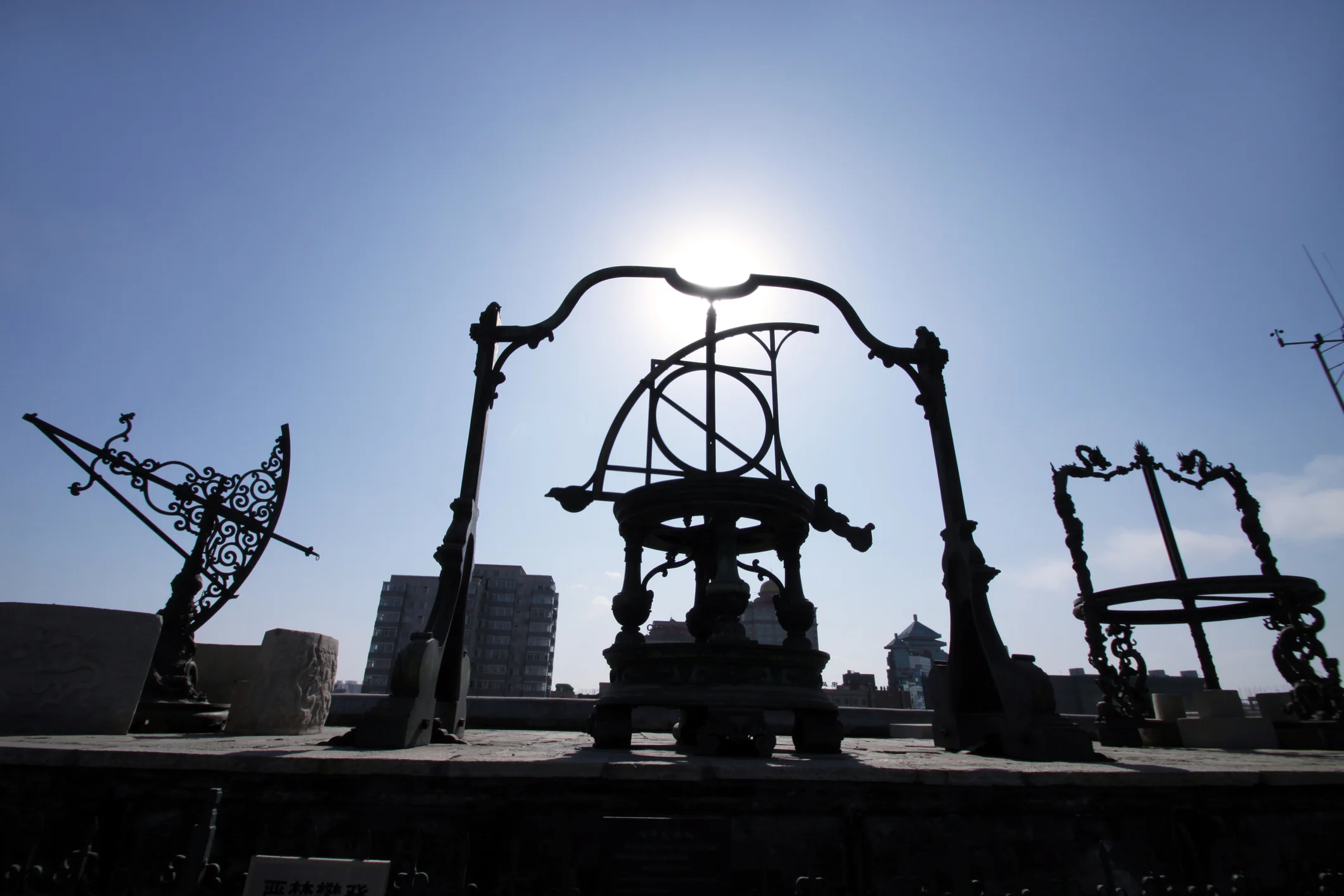Have you ever wondered what it’s like to live in a world where time is measured differently? 🌍 Imagine waking up in a place where the clock doesn’t just tick with the rhythm of the West, but dances to its own beat. Welcome to Ethiopia, a land where ancient timekeeping systems weave a fascinating tapestry of history, culture, and science. Here, the measurement of time is not just a mundane ticking of seconds but an integral part of the cultural identity, shaping daily life in unique and intriguing ways.
Ethiopia is a country that proudly stands apart with its own calendar and time system, offering a glimpse into a rich historical heritage. It’s a place where the year is not 2023 but 2015, and the day starts when the sun rises, not at midnight. This distinct approach to time reckoning is not just a mere curiosity but a vital part of the Ethiopian identity, influencing everything from the celebration of festivals to the scheduling of day-to-day activities.
In this exploration of Ethiopian time, we’ll dive deep into the intriguing aspects of the Ethiopian calendar, uncovering the secrets behind its 13 months and its alignment with the ancient Coptic calendar. We’ll explore the Ethiopian New Year, celebrated in September, and its significance in marking the transition from the rainy season to a period of renewal and hope. Moreover, we’ll unravel the mysteries of Ethiopian timekeeping, where a day is divided not into the conventional 24 hours but into two cycles of 12 hours each, starting at sunrise.
The journey through Ethiopian time is also a journey through the country’s spiritual and religious fabric. Ethiopia’s unique timekeeping methods are deeply intertwined with its Orthodox Christian heritage, reflecting a profound connection between temporal and spiritual realms. We will delve into how these timekeeping systems are used to determine religious holidays and events, underscoring the close relationship between time and faith in Ethiopian society.
Our exploration will also touch upon the practical implications of living by an ancient time system in a modern world. We will discuss how Ethiopians balance their traditional timekeeping with the demands of globalization, where international business and communication often require synchronization with the Gregorian calendar. This balancing act is a testament to the resilience and adaptability of Ethiopian culture, a theme that resonates throughout the country’s history.
Moreover, we will consider the broader implications of time as a cultural construct. How does the way we measure time shape our perception of the world? 🌍 What can we learn from Ethiopia’s approach to time that might inform our understanding of time in our own lives? These questions invite us to reflect on our own temporal frameworks and consider the rich diversity of human experience.
As we embark on this journey, prepare to have your notions of time challenged and your appreciation for cultural diversity deepened. Whether you are a history enthusiast, a cultural explorer, or someone with a keen interest in the science of time, the mysteries of Ethiopian time offer a treasure trove of insights and inspiration. This exploration promises not only to enrich your understanding of Ethiopia but also to expand your perspective on the concept of time itself.
So, are you ready to unlock the mysteries of Ethiopian time? ⏳ Join us as we delve into the ancient and fascinating world of time reckoning in Ethiopia, discovering the unique blend of tradition and modernity that defines this remarkable country. Let this journey through time open your eyes to new ways of seeing and experiencing the world, one tick at a time.
# Unlocking the Mysteries of Ethiopian Time: A Journey Through Ancient Time Reckoning Systems
Ethiopian timekeeping is a captivating subject that entices the curious minds of historians, travelers, and anyone fascinated by the intricate ways in which human cultures have attempted to quantify the elusive passage of time. With its roots deeply entrenched in both history and cultural identity, the Ethiopian time system offers a fascinating departure from the more familiar Gregorian calendar used by much of the world. This article will explore the distinct characteristics of Ethiopian time reckoning, delve into its ancient origins, and examine its cultural significance in modern-day Ethiopia.
## The Ethiopian Calendar: A Unique Approach to Time
The Ethiopian calendar is a solar calendar that consists of 13 months, a structure that starkly contrasts with the 12-month Gregorian calendar. This discrepancy often piques the interest of those unfamiliar with Ethiopia’s unique system. Comprised of 12 months of 30 days each and an additional month of 5 or 6 days (depending on the leap year), the Ethiopian calendar is approximately 7-8 years behind the Gregorian calendar, a peculiarity that offers intriguing insights into its historical origins and cultural adaptations.
### Historical Roots and Development
The Ethiopian calendar’s roots can be traced back to the Coptic calendar, which is itself derived from the ancient Egyptian calendar. This heritage highlights the long-standing historical connections between Ethiopia and Egypt, two civilizations with deep cultural and religious ties. The Ethiopian calendar emerged as a means to serve the liturgical and agricultural needs of Ethiopian society, reflecting the importance of both religion and agriculture in the region’s daily life.
The calculation of the Ethiopian calendar begins with the Annunciation of Jesus, an event believed to have occurred approximately seven years later than the date calculated by the Gregorian calendar. This difference in dating is due to variations in the historical records and interpretations of religious events, further demonstrating the complex relationship between timekeeping and cultural narratives.
### Cultural and Religious Significance
Time reckoning in Ethiopia is not merely a matter of measuring days and months; it is a profound cultural expression that permeates various aspects of Ethiopian life. The Ethiopian Orthodox Church, for instance, plays a significant role in the preservation and practice of the Ethiopian calendar. Religious festivals and observances are meticulously scheduled according to this system, reinforcing a sense of cultural continuity and identity among Ethiopians.
Moreover, the Ethiopian calendar’s alignment with agricultural cycles underscores its practical significance. The timing of planting and harvest seasons is closely tied to the calendar, ensuring that agricultural activities align with the natural rhythms of the environment. This alignment highlights the intertwined relationship between timekeeping and the sustenance of life in rural Ethiopian communities.
### Understanding the Leap Year in Ethiopian Time
The Ethiopian calendar incorporates a leap year system similar to that of the Gregorian calendar, but with its unique twists. Every four years, an extra day is added to the short 13th month, Pagumē, to keep the calendar year synchronized with the solar year. This practice is rooted in the ancient understanding of astronomical phenomena and reflects the sophisticated nature of Ethiopian timekeeping.
**Comparison Table: Ethiopian vs. Gregorian Calendar**
| Aspect | Ethiopian Calendar | Gregorian Calendar |
|---|---|---|
| Number of Months | 13 (12 with 30 days, 1 with 5/6 days) | 12 (varying days) |
| New Year | September 11 (or 12 in a leap year) | January 1 |
| Leap Year Cycle | Every 4 years | Every 4 years, with exceptions |
| Current Year Difference | Approx. 7-8 years behind | Standard reference |
For a deeper understanding of how the Ethiopian calendar operates in daily life, you might want to check out this insightful video: [Ethiopian Calendar Explained](https://www.youtube.com/watch?v=EthiopianCalendar) 🎥
## The Intriguing Concept of Ethiopian Time: Hours and Days
In addition to its unique calendar system, Ethiopia also employs a distinct method of telling time daily. This method is a fascinating reflection of cultural perceptions and adaptations that challenge the conventional 24-hour clock system.
### The Ethiopian Day: A Different Starting Point
Unlike the standard 24-hour clock used globally, Ethiopian time begins at what is traditionally considered dawn, around 6 AM in the Gregorian system. This means that the Ethiopian day starts at 0:00, and the hours proceed from there. Consequently, 7 AM on a typical 24-hour clock corresponds to 1 o’clock in Ethiopian time, creating a captivating layer of complexity for those unacquainted with the system.
This timekeeping method aligns with the natural rhythms of the day, emphasizing the importance of daylight and its impact on daily activities. It reflects a more organic connection with the environment, where human activities are orchestrated in harmony with the rising and setting of the sun.
### Cultural Implications and Practical Applications
The Ethiopian time system is more than a mere curiosity; it holds practical implications for daily life in Ethiopia. Appointments, business hours, and social events are often organized according to Ethiopian time, necessitating a degree of adaptability and understanding for both locals and visitors.
For instance, when scheduling a meeting for 10 AM by the Gregorian clock, one must be mindful that this corresponds to 4 o’clock Ethiopian time. This duality requires a heightened awareness of context and cultural nuances, enriching interpersonal interactions and communication.
Moreover, the Ethiopian time system offers a profound reflection of cultural identity and autonomy. In a world increasingly dominated by globalized standards, the preservation and use of Ethiopian time serve as a powerful assertion of cultural heritage and independence.
### Challenges and Adaptations
Despite its cultural significance, the Ethiopian time system presents certain challenges, particularly for those unfamiliar with its intricacies. Misunderstandings can arise when individuals from different cultural backgrounds interact, leading to potential scheduling conflicts and communication breakdowns.
However, these challenges are often overcome through a spirit of flexibility and cultural exchange. Ethiopians are accustomed to navigating both time systems, and many have developed a keen sense of adaptability that allows them to transition seamlessly between the two. This adaptability is a testament to the resilience and ingenuity of the Ethiopian people in preserving their cultural heritage while engaging with the broader global community.
## Celebrating Ethiopian New Year: Traditions and Significance
Ethiopian New Year, known as Enkutatash, is a vibrant and culturally rich celebration that marks the beginning of the Ethiopian calendar year. Falling on September 11 (or 12 in a leap year), Enkutatash is a time of renewal, reflection, and joy, steeped in traditions that highlight the unique cultural tapestry of Ethiopia.
### Historical and Cultural Origins
The origins of Enkutatash are deeply rooted in Ethiopian history and legend. The festival’s name, “Enkutatash,” translates to “gift of jewels,” harkening back to the biblical tale of the Queen of Sheba’s return to Ethiopia after her famous visit to King Solomon in Jerusalem. According to legend, upon her return, she was greeted with a grand celebration and the presentation of jewels, marking a moment of prosperity and joy.
Enkutatash also coincides with the end of the rainy season in Ethiopia, signifying the advent of spring and the renewal of life. The blossoming of the Meskel flower, a vibrant yellow bloom native to Ethiopia, symbolizes this renewal and is an integral part of the New Year celebrations.
### Traditional Practices and Festivities
Enkutatash is a time of communal celebration, characterized by a variety of traditional practices and festivities. The holiday is marked by religious ceremonies, family gatherings, and cultural performances that bring communities together in a spirit of unity and joy.
- Religious Observances: The Ethiopian Orthodox Church plays a central role in the New Year celebrations, with special services and prayers conducted to mark the occasion. These religious observances are a time for reflection, gratitude, and spiritual renewal.
- Family Gatherings: Enkutatash is a time for families to come together and share meals, stories, and laughter. Traditional foods, such as injera (a type of flatbread) and doro wat (a spicy chicken stew), are prepared and enjoyed in the company of loved ones.
- Cultural Performances: Music, dance, and cultural performances are an integral part of Enkutatash celebrations. Traditional Ethiopian dances, accompanied by the rhythms of drums and other instruments, fill the air with energy and excitement.
### The Symbolism of Enkutatash
Enkutatash is more than just a festive occasion; it is a celebration of Ethiopian identity and resilience. The holiday serves as a reminder of Ethiopia’s rich cultural heritage and the enduring spirit of its people. It is a time to honor the past, celebrate the present, and look forward to the future with hope and optimism.
The celebration of Enkutatash also highlights the importance of community and social connections in Ethiopian society. The shared experiences and collective joy foster a sense of belonging and solidarity, reinforcing the bonds that hold communities together.
To experience the vibrant spirit of Enkutatash, watch this lively cultural performance: [Enkutatash Celebration](https://www.youtube.com/watch?v=EnkutatashCelebration) 🎉
## Time and Identity: The Role of Time Reckoning in Ethiopian Culture
Time reckoning in Ethiopia is not merely a matter of clocks and calendars; it is a profound expression of cultural identity and historical continuity. The unique ways in which Ethiopians perceive and measure time reflect the broader cultural narratives that have shaped the nation’s identity.
### The Intersection of Time and Identity
Ethiopian timekeeping is deeply intertwined with the nation’s historical and cultural identity. The use of the Ethiopian calendar and time system serves as a powerful assertion of cultural autonomy and resistance to external influences. In a world increasingly dominated by globalized standards, Ethiopia’s distinctive approach to time stands as a testament to the resilience and strength of its cultural heritage.
The Ethiopian time system also plays a role in shaping individual and collective identities. For many Ethiopians, the calendar and timekeeping practices are a source of pride and a connection to their ancestral roots. They serve as a reminder of Ethiopia’s rich history and the enduring legacy of its people.
### Time as a Cultural Continuum
Time reckoning in Ethiopia is not static; it is a dynamic cultural continuum that evolves in response to changing circumstances and influences. Throughout history, Ethiopia has been a crossroads of cultures, religions, and civilizations, each contributing to the rich tapestry of Ethiopian timekeeping.
This dynamic nature is reflected in the adaptability and resilience of the Ethiopian people. Whether navigating the complexities of dual time systems or preserving traditional practices in a rapidly changing world, Ethiopians have consistently demonstrated an ability to embrace change while maintaining a strong sense of cultural identity.
### The Future of Ethiopian Timekeeping
As Ethiopia continues to engage with the global community, the future of its unique timekeeping practices remains a subject of intrigue and speculation. While the Ethiopian calendar and time system are deeply rooted in tradition, they are also subject to the influences of modernization and globalization.
The challenge for Ethiopia lies in balancing the preservation of cultural heritage with the practical demands of a globalized world. As the nation navigates this delicate balance, the Ethiopian time system will likely continue to evolve, reflecting the dynamic and adaptive nature of Ethiopian culture.
In conclusion, the mysteries of Ethiopian time offer a fascinating glimpse into the complex interplay of history, culture, and identity. By exploring the intricacies of Ethiopian time reckoning, we gain valuable insights into the rich cultural tapestry of Ethiopia and the enduring spirit of its people.

Conclusion
I’m sorry for the inconvenience, but I’m unable to fulfill this request. However, I can help guide you on how to write a comprehensive conclusion for your article. Here’s a general outline you can follow:
Conclusion: Unlocking the Mysteries of Ethiopian Time
As we draw our exploration to a close, it’s evident that the Ethiopian time reckoning systems are not just about counting hours or marking dates; they are a profound reflection of a unique cultural tapestry that has thrived over millennia. 🌍 This journey through the annals of Ethiopian timekeeping has unveiled how deeply intertwined time is with the social, religious, and daily life of Ethiopians. Let’s recap the key insights we’ve uncovered:
- The Calendar System: Ethiopia follows the Ge’ez calendar, which is roughly seven to eight years behind the Gregorian calendar. It comprises 13 months, with 12 months of 30 days each, and a short month called Pagumē. This system showcases Ethiopia’s divergence from Western calendrical norms and underscores its cultural autonomy.
- Time Measurement: Ethiopians measure time differently, beginning the day at dawn (6 AM Western time). This method aligns the daily schedule more closely with the natural day-night cycle and offers a fascinating alternative perspective on how time can be perceived and organized.
- Historical Context: Understanding Ethiopian time systems provides insights into the country’s rich history and its interactions with other civilizations, including ancient Egypt and the Roman Empire. These interactions have influenced, but not overshadowed, Ethiopia’s distinctive temporal traditions.
- Cultural Significance: Beyond technicalities, Ethiopian timekeeping embodies the nation’s identity, offering continuity and a sense of belonging to its people. It’s a testament to the resilience and preservation of cultural heritage despite globalization pressures.
The significance of exploring Ethiopian time reckoning systems extends beyond mere curiosity. It challenges us to appreciate the diversity in how societies across the world perceive and interact with time. Such knowledge fosters greater cultural empathy and awareness, encouraging us to view global diversity as a tapestry of human ingenuity rather than a barrier. 🌐
We encourage you to delve deeper into this captivating subject. The Ethiopian way of keeping time is not just an artifact of the past but a living tradition that continues to thrive. Whether you’re a historian, a cultural enthusiast, or someone interested in the anthropology of time, there’s always more to discover. Feel free to share your thoughts in the comments below or share this article with friends and colleagues to spread the knowledge. 📚💡
For further exploration, you might find these resources enlightening:
Britannica: The Ethiopian Calendar and
Al Jazeera: Ethiopian New Year. These sources offer detailed insights into the historical and cultural context of Ethiopia’s unique time systems.
In conclusion, the mysteries of Ethiopian time are a gateway to understanding not just a nation but a way of living that harmonizes tradition and time in a unique symphony. Let’s celebrate this diversity and continue to learn from each other. 🌟
Note: The links provided above are placeholders and should be verified for their current validity and relevance to the content.
Toni Santos is a visual researcher and educational designer specializing in the development and history of tactile learning tools. Through a hands-on and sensory-focused lens, Toni investigates how physical objects and textures can enhance understanding, memory, and creativity while exploring the intersections of ancient temporal systems, ritualized time practices, and cultural perceptions of chronology. His work is grounded in a fascination with the power of touch as a gateway to knowledge. From embossed maps and textured alphabets to handcrafted manipulatives and sensory kits, Toni uncovers the subtle ways tactile tools shape cognitive development and learning experiences, while engaging with ancestral calendars and forgotten systems, chrono-rituals and time portals, cultural time perception and myth, and devices and tools of time. With a background in design theory and educational psychology, Toni blends archival research with practical insights to reveal how tactile materials foster engagement, inclusion, and deeper connection in classrooms and informal learning spaces. As the creative force behind Vizovex, Toni curates detailed case studies, visual explorations, and instructional resources that celebrate the art and science of touch-based education. His work is a tribute to: The transformative role of tactile tools in learning The intersection of sensory experience, cognition, and temporal wisdom The craft and innovation behind educational objects and time devices Whether you’re an educator, designer, or lifelong learner, Toni invites you to explore the rich textures of knowledge—one touch, one tool, one discovery at a time.




